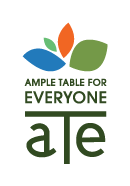Part 3 of a Multi-Part Blog Series About Food Stamps
By now, the billions of dollars in cuts to the food stamp (SNAP) program affecting millions of people is old news. But it’s a fresh, ongoing struggle for those who live it daily. Who are these people, exactly? And what do the cuts really mean? Two million New Yorkers will receive $36 less per month for food stamps. For many New Yorkers, that’s about what they spend on coffee during an average workweek.
Who is affected by cuts to food stamps?
According to the Center on Budget and Policy Priorities (CBPP) and Forbes, nearly 45 percent of SNAP recipients are children, 8 percent are elderly and about 20 percent are disabled. 1 in 7 people in the U.S. receiving SNAP benefits are veterans, college graduates and people who were once considered ‘middle class’—the working poor.
Cuts not only affect the recipients, but also the grocers who estimate that every dollar cut from food stamps costs them $1.70. Food banks are also affected. The Food Bank for NYC reported 31 percent of food banks saw a 25 percent increase in foot traffic in November 2013.
What does it mean to get $36 less per month?
It means 24 fewer meals per month. It means the allotment per meal goes from $1.50 to less than $1.40. What exactly can you buy for that amount that is nourishing? Several reporters and bloggers have lived on and reported their experiences with the food stamp allotment. They found it to be incredibly challenging even knowing the exercise was entirely voluntary and temporary. Not the case for those living the reality.
A report in Salon by Sarah Gray (What I Learned from A Week on Food Stamps) details her experience surviving on SNAP benefits for a week. She cites time as an “unexpected source of frustration.” Cooking meals that can be eaten over the course of a week requires significant planning, and mistiming recipes or taking too long to clean up can mean running late for jobs or picking up children. She recalls thinking, “I have $41 for 21 meals. What am I eating next? How long will it take to make? Do I have leftovers to take to work today? What’s left in my pantry? What time should I eat so I don’t go to bed hungry? How long can I wait until my next meal?”
Digging deeper into the face of SNAP today, it seems the program reaches a far broader range of people than history might suggest. Following is a snapshot of real people and the real struggles they face on SNAP:
In this Huffington Post story by Dennis Powers (I Am The New Working Poor and I’m Not Alone), Dennis, at age 60, experienced problems with his business and found himself in need of help. It took him a year to go to social services. He says, “I pride myself on not succumbing to prejudice so it was with a wash of embarrassment and shame that I realized that ‘them’ was in fact me. The people in that waiting room could have been my neighbors or co-workers…These were not the dregs of society looking for a handout. These were working people, just like me, who just needed some help. This was a shocking reminder of what has become of the middle class.”
About 900,000 veterans and 5,000 active duty troops receive SNAP benefits. As reported by Michael McAuliff in the Huffington Post (Food Stamp Cuts Feared by Veterans), Iraq veteran Dan Martinez endured two deployments and suffered from traumatic brain injury and post-traumatic stress as a result of mortar attacks and a humvee rollover. He had to sue for full benefits and while he did, his family needed assistance so he could get the treatment he needed. He is on track now, but wonders “how does it happen that I went from an artillery Captain, two deployments in Iraq to welfare?”
NBC news reports that tens of millions of children are recipients of food stamps. The No Kid Hungry website lists many stories of children who have benefited from SNAP. Many of the stories are like Michelle’s, who tells of her Dad leaving the family when she was 8 years old. The household went from a family of six supported by two incomes, to a family of five supported by one income. The family received benefits, the children enrolled in the National School Lunch Program, and each child got an education with a similar goal “to never forget where we came from and to help those who have the unfortunate luck of being where we once were.”
Then there’s Dave who, according to ColorLines, is 65, homeless and living in a transitional facility in NYC. “If (food stamps) were cut, it would mean my stomach would have to get acclimated to the days where I would only eat lunch every two days,” he says.
So, who should be get less?
The small business-owner who hits a rough patch, the veteran who needs medical help, the countless children who are victims by circumstance, or the senior citizen without a home?
“Food is one of the most effective forms of prevention,” says Sarah Franklin, a Brooklyn-based food policy advocate. Obesity, cognitive ability and heart disease are all linked to eating habits. “Making sure that people have access to food is, in my mind, one of the most important and no-brainer policies,” she says.

